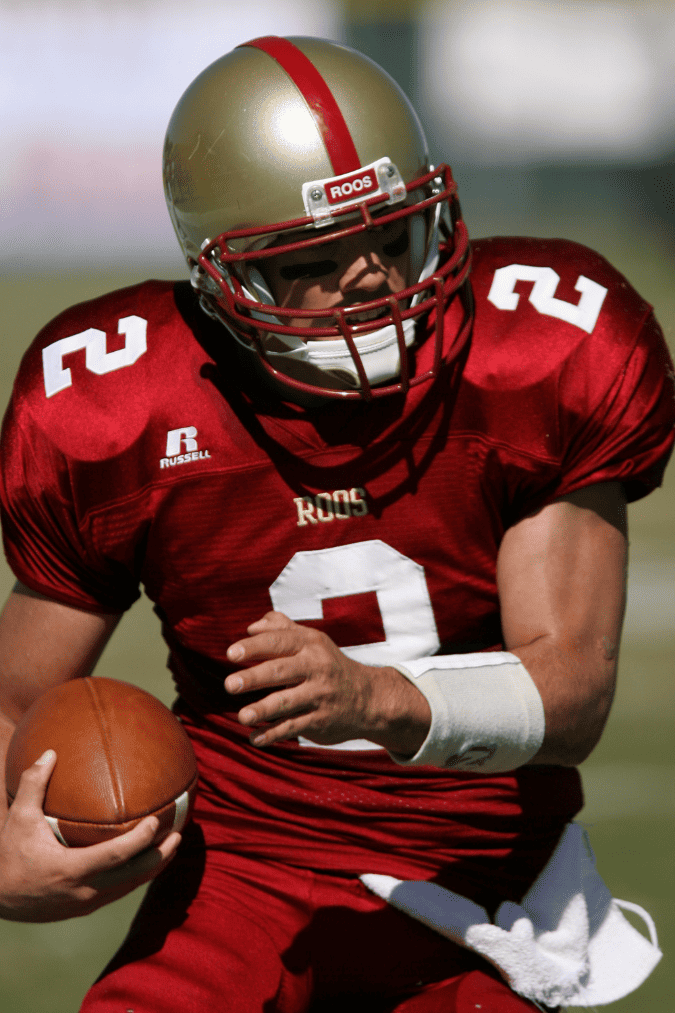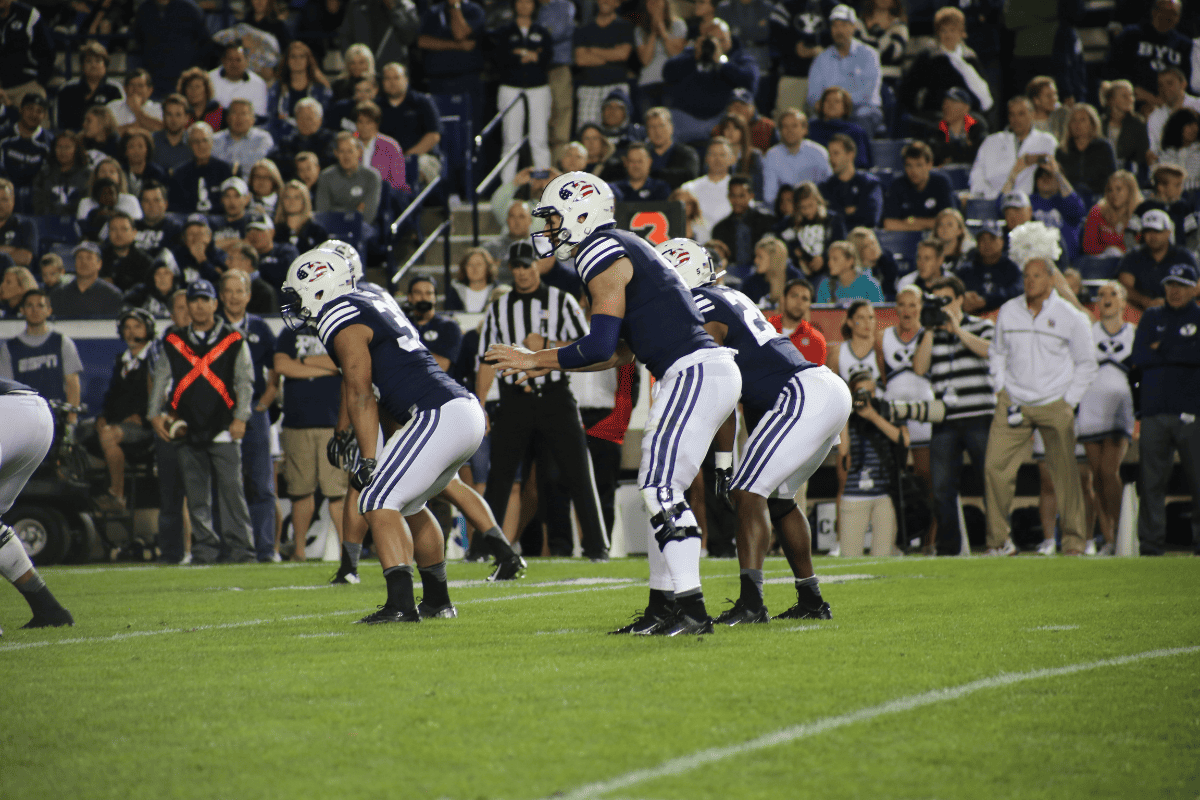What is a QB Draw? (Football Playbook 101)
In the lively world of football, each play carries a unique rhythm and tactic. Among them, the Quarterback Draw (or QB Draw) is like a dramatic pause before the action unfolds.
Essentially, the QB Draw is a designed running play where the quarterback, after receiving the snap, takes a step back as if to pass, but then rushes forward through a gap in the defense. This play is aimed at catching the defense off-guard, expecting a pass instead of a run.
Background of the QB Draw Play
The QB Draw isn’t a new trick on the field. It’s been around for quite a while, tracing its roots back to when quarterbacks were the primary ball carriers.
Over time, as football evolved with specialized running backs, the QB Draw became a clever disguise, a way to sprinkle in unpredictability amidst a pass-heavy game. It’s like a nod to football’s olden days while adapting to modern play-calling strategies.
Importance in the Game Strategy
The QB Draw isn’t just a whimsical play; it’s a strategic maneuver. It’s particularly useful when the defense is expecting a pass, like in long-yardage situations or when a high-flying passing attack has been the narrative of the game.
By throwing in a QB Draw, the offense can exploit a defense that’s spread thin or is aggressively rushing the passer. Plus, it’s a way to keep the defense honest, making them think twice before committing to a pass rush in future plays.
This adds a layer of mental gameplay, making football not just a game of brute force, but also a game of clever tactics and surprise elements.
Execution of a QB Draw
Pre-Snap Readings
Football is a game of quick decisions and recognizing what the other side is up to before the ball is even snapped. This is where our quarterback starts to shine.
Before the snap, the quarterback takes a moment to read the defense. He’s looking for clues. Are the defenders lined up for a pass rush? Are they spread out or bunched up? The answers to these questions can give him a good idea if the QB draw play will work.
Recognizing a blitz or figuring out the coverage scheme* can be a game-changer. If the defense is set up for a pass play, it might be the perfect time for a QB draw.
*A Man-to-Man Cover 0 look is ideal because the secondary will be focused on the receivers they’re covering and not necessarily the quarterback leaking out of the pocket.
Snap and Initial Steps
Once the ball is snapped, the first few steps are all about deception.
The quarterback gets the ball and makes it look like any other play. He’s acting here, making it look like a passing play is about to unfold.
He might take a step or two back, pretending to set up for a pass. This “acting job” is crucial; it’s the pause in the drama before the action kicks back in.
The role of the offensive line in making the play look like a pass is also crucial because many defenders take their cue on whether a play is a run or a pass by watching how the offensive line reacts at the snap of the ball.
The Draw

Now comes the draw part of the QB Draw.
Sometimes, there’s an option for the QB to hand off the ball to a running back instead. But if the coast looks clear, he keeps the ball.
The big guys up front have a massive role to play. They need to create a path for the quarterback to run through, keeping the defenders at bay.
Advancing the Ball
And then, it’s go time!
With a good path cleared, the quarterback dashes up the field, aiming to gain as many yards as possible, or even better, heading for the end zone.
It’s not a solo mission. The blockers are there to keep the defenders off the quarterback, helping him navigate through the defense and gain those precious yards.
Executing a QB Draw requires a blend of good pre-snap reads, a dash of acting, solid blocking, and a burst of speed. When done right, it’s a beautiful play that can catch the defense napping and change the momentum of the game.
Read More:
Strategic Utilization
In the chess game that is football, the QB Draw is a knight, moving unexpectedly amidst a board of straightforward movers.
When it’s third down with many yards to go, the defense often expects a pass. A QB Draw here can exploit their pass-focused formation and slip through for a surprising gain.
Close to the end zone, the field gets cramped, but a QB Draw can be the wild card, finding a quick path through a distracted defense.
Countering Defensive Schemes
It’s all about finding the defense’s weak spot and exploiting it with a QB Draw.
When the defense is hungry for a quarterback sack, they might overcommit, leaving just the right amount of space for a QB Draw to slip through.
Blitzes bring pressure, but they also bring opportunity. A well-timed QB Draw can turn an aggressive blitz into a big gain on the ground.
Advantages and Disadvantages
Every play in football has its pros and cons, and the QB Draw is no exception.
Pros
The QB Draw brings with it a basket of advantages when used wisely.
With the defense caught off guard, the field often opens up for the quarterback to make a substantial gain, especially if the blockers do their job right.
It’s a play that feeds on the unexpected. When everyone is looking for a pass, a sudden rush up the field can catch the defense on their heels.
Cons
However, the QB Draw is not without its fair share of risks.
Running with the ball exposes the quarterback to potential hits and injuries, something every team would want to avoid.
If the defense reads the play early or the blocking fails, the QB Draw can result in a loss of yardage, putting the offense in a tight spot.
The QB Draw is a double-edged sword, offering the promise of big gains while also carrying inherent risks. It’s a play that embodies the blend of strategy, skill, and a touch of daring that makes football the thrilling game it is.
Conclusion
The QB Draw is a tactical maneuver, blending the art of deception with a sudden burst of action. Its execution requires a keen understanding of the defense, precise timing, and solid teamwork. When utilized strategically, it can yield significant gains, making it a potent tool in an offensive playbook.
The QB Draw reflects football’s dynamic nature, bridging traditional running plays with modern passing schemes. Its relevance in today’s game showcases the enduring importance of versatility and unpredictability in football strategy.

